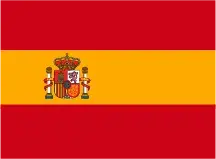The National Commission on Markets and Competition (CNMC) has taken a crucial step towards optimising access to the electricity grid by presenting Circular 1/2024.
This will come into force three months after the day following its publication in the BOE, scheduled for January 12.
From that date, a period of ten months is established for the adaptation of the contents on the web platforms.
The main objective of this regulatory framework is to make efficient use of networks and guarantee a level playing field for all actors involved.
What advantage does this bring to charging point operators?
The deployment of chargers in Spain faces multiple challenges, from administrative delays to technical and economic uncertainties.
In this context, Arturo Pérez de Lucía González, General Director of the Business Association for the Development and Promotion of Electric Mobility (AEDIVE), underlines:
“CPOs have endured long times to activate fast and high-power charging points, which generates problems such as technological obsolescence of installed equipment that cannot be put into operation.”
He also mentions that these delays affect the reputation of CPOs, who are often unfairly singled out by users.
With the implementation of the Circular, it is expected that connection processes will be accelerated, improving coordination between CPOs and network managers.
“It is important that information on power availability at specific connection points is provided , as node-level information, while useful, does not fully address operators’ needs,” he adds.

Transparency as a central axis
A key component of the Circular is the inclusion of transparency criteria, especially in areas where the network is saturated.
In this regard, Roberto Vaquero Trigo, Project Director at Zunder, points out that it is essential to clearly define when a supply can be considered “viable.”
“The Circular is the definition/obligations that network managers will have regarding the content of the technical and economic conditions, linked to transparency in cases where the network is saturated,” says the expert.
Flexible access, another of the elements highlighted by the CNMC, will allow connections to be adapted to the actual capacity of the network.
Its effectiveness will depend on practical implementation by network managers and strict compliance with the technical and economic obligations established by the Circular.
It is important to note that one of the main demands of the sector is to have a public network power map.
The experience of countries such as Portugal shows that this can transform the sector, since CPOs have access to detailed information that facilitates project planning, significantly reducing installation times.
In Spain, where this resource is not yet available, it is estimated that its development could take up to two years.
The lack of this tool directly impacts the number of operational charging points.
According to recent figures, of the more than 37,000 chargers installed in the country, approximately 7,000 are not in operation due to technical problems or bureaucratic delays.
A public power map would not only optimize existing projects, but would also allow for more precise development plans to be drawn up, taking into account the real capacity of each region.
Investments: an urgent challenge
Beyond regulation, the climate and infrastructure objectives set by the European AFIR regulation for 2025, 2027 and 2030 require a significant increase in investments in electricity networks.
This includes both strengthening the existing one and creating new substations to support the growing demand that electric vehicles will generate.
In this regard, Vaquero Trigo highlights that anticipation in investments is crucial to ensure that CPOs can meet their capital commitments, avoiding unnecessary delays.
The speed of implementation of this Circular depends on effective coordination between public and private actors.
A step forward, but not definitive
While Circular 1/2024 marks a significant step forward, the consensus among experts is that its success will depend on how the technical aspects are implemented.
As the AEDIVE representative points out, “details make the difference.”
This includes not only the definition of technical and economic conditions, but also clarity regarding the responsibilities of each actor.
He added that it remains to be seen whether this regulation will be sufficient to resolve the “Gordian knot” that has limited the development of the sector in recent years.
Collaboration between the CNMC, charging operators and network managers will be essential to take advantage of this opportunity and make Spain a European benchmark in charging infrastructure.








